Home »
Misc »
How to teach aggressiveness in basketball
How to teach aggressiveness in basketball
Drills & Strategies to Teach Aggressiveness & Hustle
By Joe Haefner
In this article, you can find:
- How to Emphasize Aggressiveness and Hustle
- What Behaviors to Emphasize
- How to Use Points During Practice
- Drills and Resources
- Hustle Stats to Track and Reward
Over the years, I've come to believe that being aggressive is personality-based. Some players are just naturally more aggressive. Some aren't.
However, no matter a person's disposition, I think there are ways to get your players to play more aggressively.
I have also found that keeping things really simple helps. Sometimes players just don't know what to do...they want to play hard but don't know how...
So here are some techniques that teach any age players to be comfortable with being aggressive so that it almost becomes second nature to them:
Verbally reward all plays that include aggressiveness and hustle.
![]()
Catch players being aggressive or hustling - stop any play in practice to tell them they did a great job. Get excited about it!
It is also important that youth players understand what "aggressive" and "hustle" mean. By stopping practice to compliment these hustle plays, players will begin to understand what your expectations are in practices and games. Youth players need examples of what positive aggressiveness looks like on the court.
This also creates a positive team culture as players learn to cheer on their teammates for tremendous effort.
Even if you have to start with something small, this can help get them going in the right direction. You can focus on things like:
- Taking charges
- Diving on the floor and securing a loose ball
- Saving a ball that was going out of bounds
- Offensive rebounds/Boxing out
- Defensive rebounds/Boxing out
- Attacking the lane when it's open
- Exceptional hustle play
Another important technique is to have teammates run over and pick up players who dive on the floor or are knocked over taking a charge. All four teammates should sprint over, help the player up, and high-5/congratulate the teammate who made a hustle play. Do this during practice and games.
All four teammates should sprint over, help the player up, and high-5/congratulate the teammate who made a hustle play. Do this during practice and games.
Use points during practice.
If you take anything from this article, this may just be the most important tip.
During scrimmages, we would give extra points for certain behaviors we wanted more of. You could mix a few of them or just focus on one of them for the day.
Here's an example of how I have used points during scrimmages:
+2 for any offensive rebounding
-1 for a missed block out
+1 for getting fouled on a shot
+2 for special hustle plays
+1 for diving on the floor for a loose ball (only when necessary - reduce points for unnecessary diving)
No matter how you choose to use points to emphasize aggressiveness and hustle, the bottom line is...
Reward and praise the effort...not the outcome or the talent.
Your players will transfer the effort and behaviors to game time.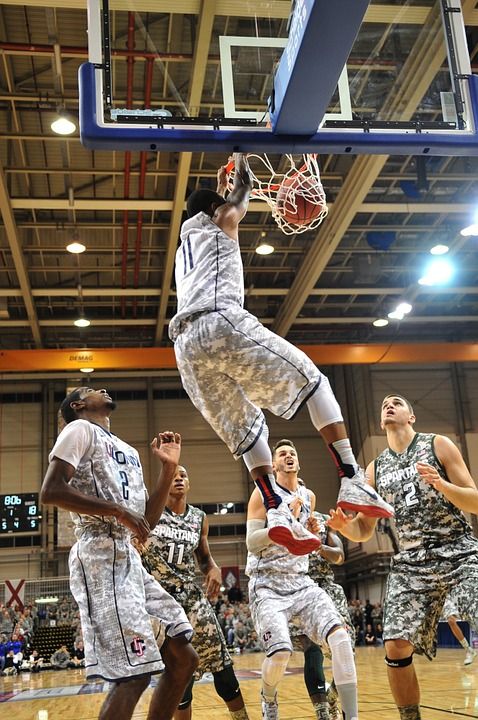
Use drills that require aggression.
There are many loose ball drills you can incorporate into practice. Just use your common sense and tailor the drill to the age and skill levels of your players.
You want to take care not to use any drills (or part of a drill) that may cause injury...for instance, youth players are not ready to take a charge or have multiple players diving after a loose ball.
Here's one fun Loose Ball Drill that a lot of youth and high school players love! It improves three key areas:
- Hustling after every loose ball
- One-on-one offense
- Guarding the ball
Instructions:
- Line up 2 players on the baseline (low post).
- Coach takes the ball and throws it down the court hard.
- Players must sprint hard to the ball.
- The 1st player to get the ball is on offense and the other player must run back and defend in the half court.
- Players then go 1v1 until one scores.

You can also emphasize keeping the ball out of the paint and defending with hands straight up (no reaching in).
We also have a few free resources you can take a look at:
- Man in the Hole Drill
This drill instills aggressiveness, hustle, and conditioning.
- Sampson's Take a Charge & Loose Ball Drill
This drill works on taking charges and diving after loose balls. Again, take care with what age/skill level you use this one with.
- 3 Best Rebounding Drills
This video teaches players to make contact and correctly box out no matter what angle or side the opponent is coming from.
Whether you keep stats on paper or use technology, showing kids the stats can help motivate them. Again, you can make a big deal out of these stats by emphasizing them in an exciting manner.
Maybe the day after a game, you announce improvements in these as a team. And if you feel that it works for your particular team, you can highlight individual players as well.
You could even graph these on chart paper and display so players can see the team's progress. Of course, this may depend on your particular group of players:
- Gathered loose balls
- Charges
- Deflections
- Forced jump balls
- Defensive rebounds
- Offensive rebounds
High school teams that have banquets at the end of the season should consider having awards that also reward effort and not just talent (such as most charges taken).
In conclusion, sometimes you just have to find out what makes each player tick. Some will never be super aggressive...it's not their personality. But in time, you can find certain things they will do well and will get aggressive with.
Embrace their strengths, encourage what you want, but realize you may never change some personalities. Find out what they are good at and foster those things.
Related Products & Articles10 Tips For Getting Your Basketball Team Focused, Motivated, And Playing Hard!
The Attack & Counter Skill Development System
What do you think? Let us know by leaving your comments, suggestions, and questions. ..
..
7 Basketball Toughness Drills To Develop Aggressiveness, Confidence & Swagger
Skip to content How to Be More Aggressive in Basketball
If your youth basketball coaching sessions have seen your coach imploring you to be more aggressive out there on the court, there are a great number of drills you can do to gain more toughness and therefore more aggressive in your basketball.
Teaching the Aggressive Defensive Basketball Position Drill
Aggressive play starts with defense.
Put your energy into stopping that opposing player from scoring like your life depends on it. Get every rebound and never give up on it. This is a way to play aggressively when playing the fundamentals of basketball.
Your teammates will take notice and consider you a valuable asset on the court – someone who will always have their back.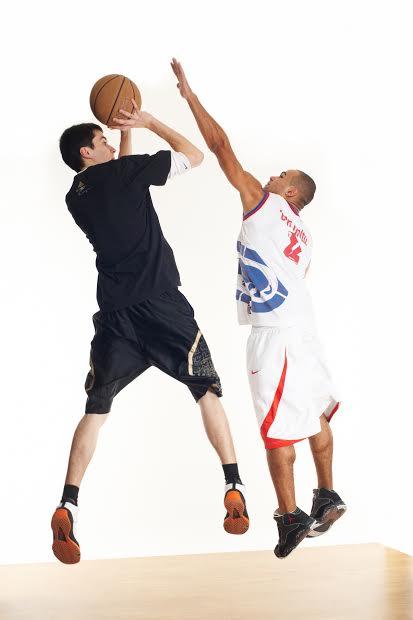
Your teammates will feed off this energy and you will be considered a huge presence on the court. This, in turn, will give you the confidence you need for aggressive offensive play.
Own the Ball
When the ball is in your hands and you’re on the offense – own it! Cultivate the idea that the ball belongs to you – not the defender!
It is your ball…you are holding it.
It is not theirs…and never will be.
All you have to do is hold on to the ball, keep it from them, and the rest will come to you.
Have a Basketball Match with Unknown Players
If you find your aggression changes based on who you are playing, this can be a guide for taming your passiveness problem. It is common for players to play aggressively with their friends and people they know well as they are comfortable and in their element.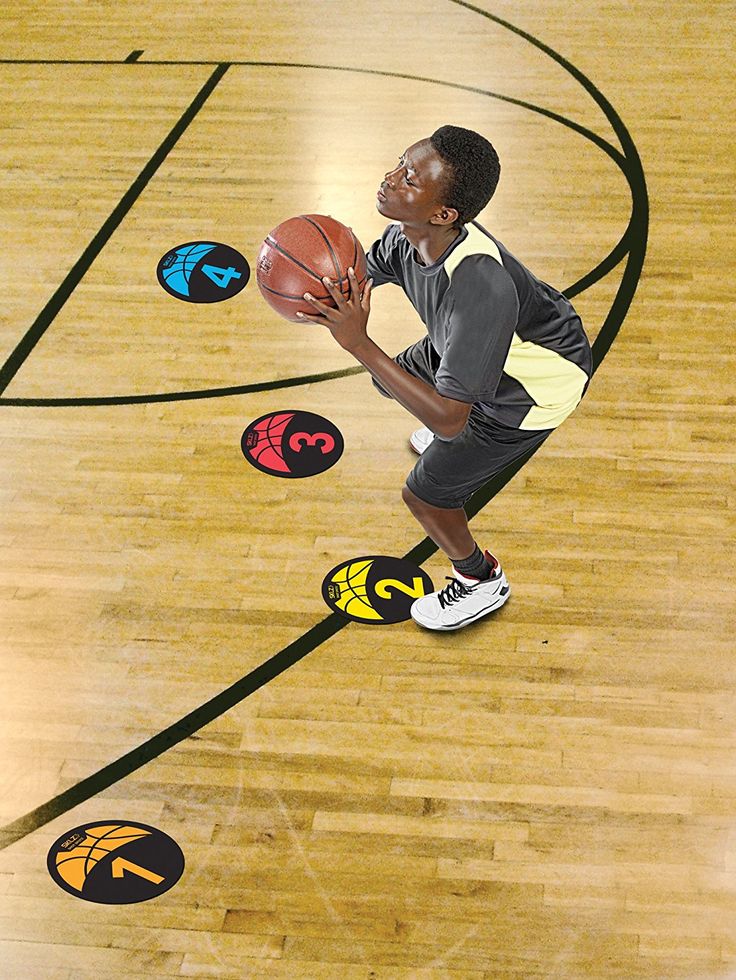
Players know that if they make a mistake with their friends they probably won’t punish them too badly for it. Players also know that if they push aggressively by using their elbows and arms more vigorously, accidentally hurting someone they know will be more quickly forgiven.
When we play against unknown players we are out of our groove and we don’t know exactly how they will react to aggressive play.
This can make us tense, nervous, and timid.
The key to getting out of this psychological rut is to play more with people you do not know – play more games with the people that make you nervous or in settings that push your boundaries. Each time you play with unknown players you are building your mental strength.
You will be gaining the experience and learning the skills needed to deal with any kind of teammate or opponent, as well as proving to yourself that there is nothing to fear.
Develop Your Skills in Basketball
It’s easy to look at the best players on the team that seem to effortlessly scoring basket after basket and think: “Well, I would be confident if I could play that well. ”
”
The fact is they have practiced those shots hundreds or thousands of times.
If you practice the same way you will feel the same confidence – even when there are three seconds left on the clock and the ball is in your hands.
If you’ve got a weak dribble with the ball in your left hand, for example, work on it every day.
Work on your strength, your athleticism, agility, and playing skills. Eat the right food, and get enough sleep every day so you’re always playing at your best and developing your skills as quickly as possible.
Teaching the “Build the Habit Drill”
Consciously start hand-checking and boxing out more often. Much like any habit: aggressive, confident basketball playing comes from forcing yourself to do it time and again…until it becomes second nature.
This builds your toughness!
If you find yourself standing around the perimeter then it’s time to remind yourself to get in there and work – even it if appears your immediate efforts are unimportant. It’s all about building up those aggressive habits until they become second nature as you become a naturally aggressive player.
It’s all about building up those aggressive habits until they become second nature as you become a naturally aggressive player.
Try Cross-Training
One suggestion is to cross-train in a different sport…perhaps football?
Football is a highly aggressive contact youth sport…much more so than basketball.
You will be learning how to play aggressively every day and becoming used to the rough and tumble of competitive sports!
Never Fear to Fail
If you’re often benched, you might build a mental block where you fear that any on-court failure will have you back on the bench. You prefer to play it safe – a dangerous thing to do in basketball. Try to remember that fear is just a state of mind.
You have the power to tell yourself “No, I’m not afraid!”
Taking more risks will make you a better player. Your coach will ultimately not want to bench the player that’s always ready to go in for that loose ball.
Aggressiveness and mental toughness comes from confidence.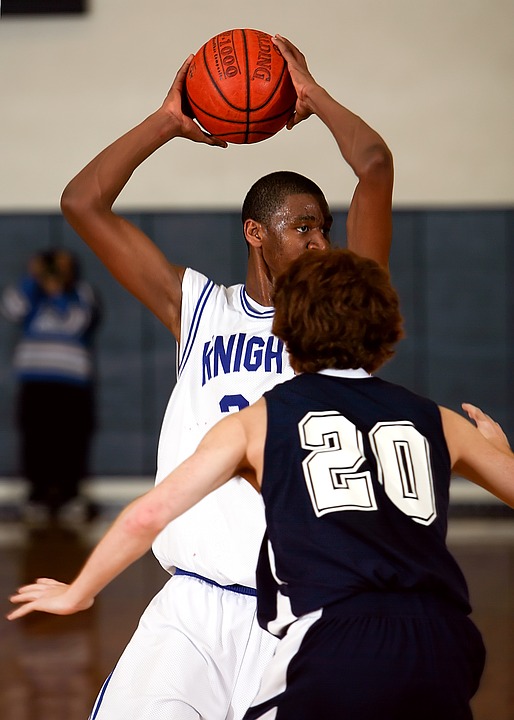 The less confident we are, the more fearful we are of making mistakes. The more fearful we are of making mistakes, the more we fear failure. The more we fear failure, the more we fear our coaches. Ultimately, this is can result in a loss of passion for the game, which again feeds into a lack of aggression on the court.
The less confident we are, the more fearful we are of making mistakes. The more fearful we are of making mistakes, the more we fear failure. The more we fear failure, the more we fear our coaches. Ultimately, this is can result in a loss of passion for the game, which again feeds into a lack of aggression on the court.
Love the game first, and you’ll want to get in there and win it all for your cherished teammates.
The Mental Toughness Academy has a program designed specifically to improve your ability on the court. Our Basketball Mental Toughness program can teach you how to overcome negativity and doubt by instilling confidence and mental fortitude.
A mentally tough athlete is an unstoppable athlete!
Welcome to the Winner’s Circle!
Craig Sigl, The Mental Toughness Trainer and Youth Sports Specialist
Craig Sigl2021-04-14T02:59:37+08:00
Go to Top
Shooting exercises
replica swiss watches
Basketball is a great team game, the team consists of players whose skill is achieved with great effort.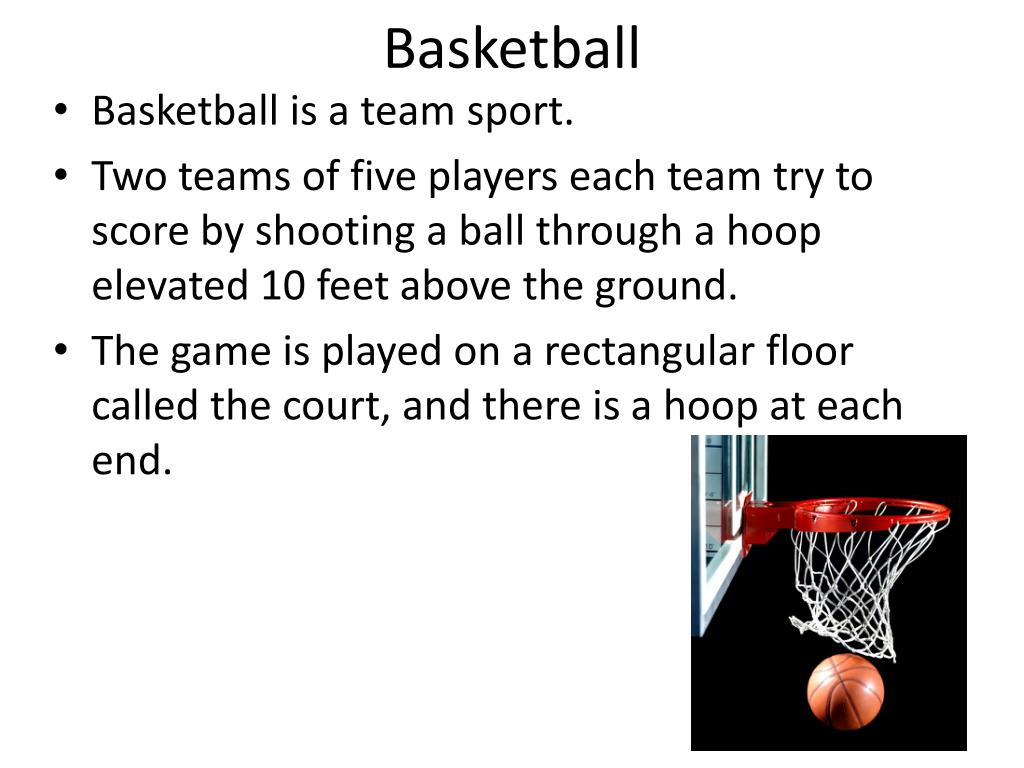 The only person who can understand that you are working hard is yourself. Remember, you only get out of the game what you put into it. Give yourself to her without a trace.
The only person who can understand that you are working hard is yourself. Remember, you only get out of the game what you put into it. Give yourself to her without a trace.
Jump shot
In basketball, an outstanding sniper is a piece item. If you want to be a great sniper, all you need to do is just want to be one.
First, you must improve your skills.
This includes having a good coach and years of training. Secondly, you must improve in game mode.
This means that you must perform throwing drills at the same intensity as in the game. It's far better to hit 100 shots in play than 500 sloppy shots that a good defender would never let you make in a game. Finally, you must understand that working on a roll is like investing in a bank. If you don't deposit anything into your account, you won't receive dividends when you need them.
The sniper must have "throw school". When throwing after a dribble, one of the main features is the last hit of the ball on the court, which must be fast and strong so that it bounces higher, right into your hands - this will help you not waste time handling the ball.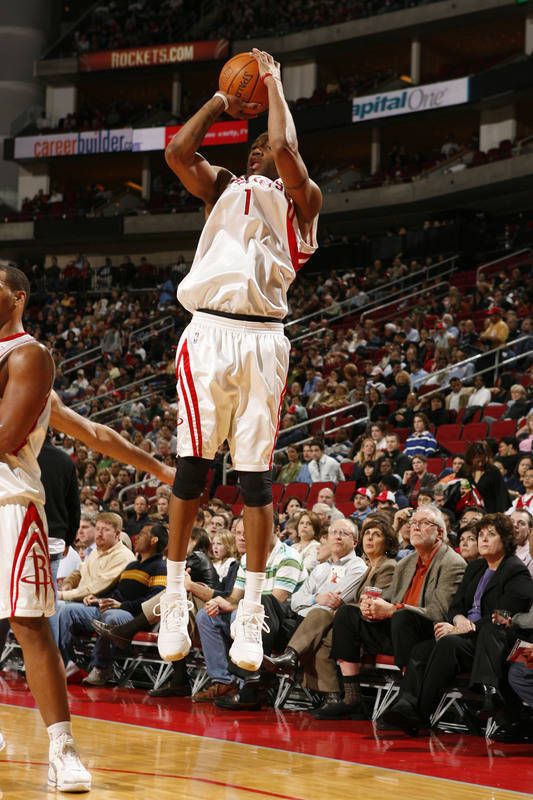
Individual Shooting Exercises
Exercise 1 Attention Concentration
- Start from a distance close to the ring.
- Throw with one hand. Follow correct technique.
- Make five from each position. Take a step back and repeat (Fig. 1).
Exercise 2 7 throwing positions and rebound (4 meters)
- Jump shot from position 1.
- Pick up the ball, dribble quickly to position 7, shoot.
- Pick-up, fast with guiding back to position 1.
- Make 10 rolls.
- Repeat the same steps using positions 6 and 2, 5 and 3, 4 (Fig. 2).
Exercise 3 7 shooting positions and a rebound (from behind the three-point line)
1. Repeat the same steps as in exercise 2 (fig. 3).
Exercise 4 Throw after stop
- Start from position 1, toss the ball to position
- Pick it up, while you have to run around the ball so that you are facing the ring.

- Make 10 rolls, then advance to the next position.
Ex.5 Shooting from five positions after a fake move (from four meters or from behind the three-point line)
- Start from any position.
- On bent knees and with your head up, you do a throw feint, hit the ball one or two with your right hand, stop and jump.
- Return to position, throw feint, one or two hits with the ball with the left hand, stop, throw.
- At each position, 5 attempts (Fig. 5).
Exercise 6 Jump shots after dribbling
- Start the exercise from the center of the field, move towards the hoop with dribbling at game speed, after stopping quickly shoot.
- The shot must be taken from a middle distance or from behind a three-point arc. Perform the exercise, both on the right and on the left and in the middle of the site.
- Use different types of dribbles: fast dribbles, broken tempos, pivots, etc.
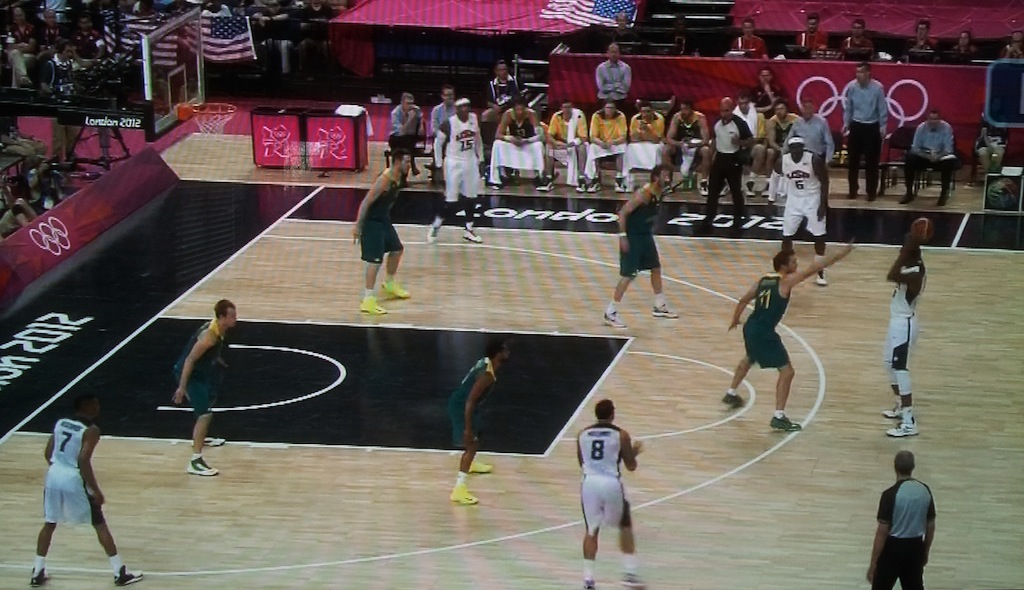
- Make 5 attempts in each direction (Fig. 6).
Exercise 7 Playing with a virtual opponent
- Perform a free throw. If you have implemented it, you get one point. If not, then your "opponent" is three.
- You make subsequent throws from any position except the three-second zone, imitating the rhythm of the game. Work on different moves and throws. Each of your successful attempts is estimated at the bottom of the point, unsuccessful at two for the "opponent". The game goes to 11 points.
- This is a very good exercise to consolidate what you have learned. Try! Improve! (Fig. 7).
Double shots
Dr. 8 2 players, shot and rebound (4 meters or from behind the three-point line)
- The drill starts with a good, clear pass. The player who made the pass from under the basket goes to the place of the thrower.
- The player in position 1 catches the ball and shoots.
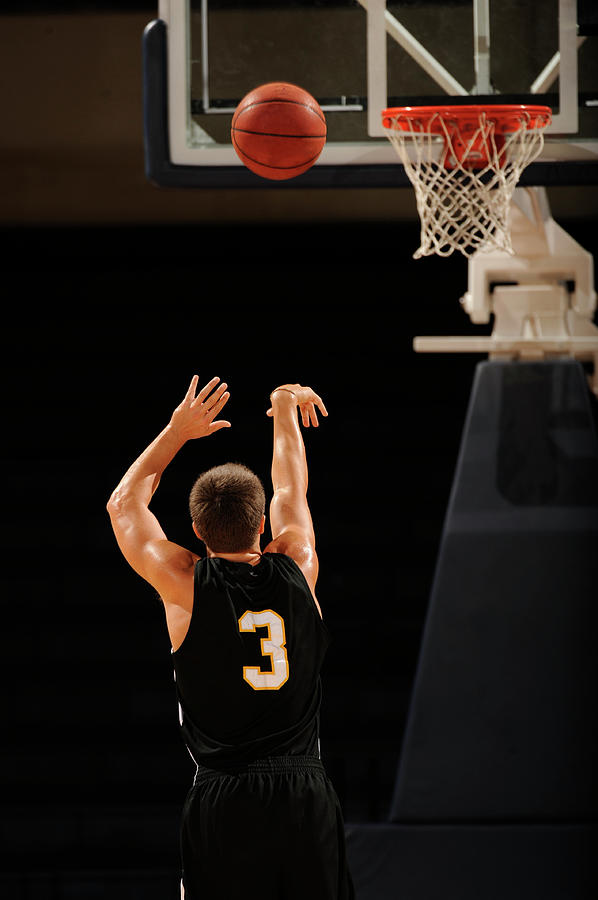
- After the shot, the player runs to the rebound and then passes the ball 1 position and so on.
- Each player must make five throws. The exercise is performed at a fast pace, but the throws should not be sloppy.
- Then move to another position and everything is the same (Fig. 8).
Exercise 9 Two players, throw and rebound (per result)
- The exercise is performed as described above.
- The player who made the pass tries to interfere with the shot, but does not block.
- Game up to 5 hits.
- Then we move to another position, and so on. (Fig. 9).
Exercise 10 Two players, throw and rebound, throw feint
- The exercise is performed in the same way as the previous one.
- The defender who made the pass tries to interfere with the player in position 1, but does not block the shot.
- The attacker makes a throw feint and beats the defender.

- Performs a short dribble, stops and throws.
- Do 5 times each and change position (Fig. 10).
Ex. 11 2 players, shot after a stoppage (from four meters or from behind the three-point line)
- The attacker is in position 1, ready to receive the pass.
- The player under the basket passes.
- After the throw, the attacker waits for the rebound to be made.
- The player receives a pass by making a stop, but already in position 2. Then back.
- Make 7 throws, two free throws and switch (fig. 11).
Ex. 12 Shooting with movement (from four meters or from behind a three-point arc)
- The attacker moves around the perimeter at game speed.
- A player passes to the hand farthest from the ring.
- The attacker must stop, catch the ball and throw.
- Make seven throws, two free throws and change (fig. 12).
Note: The previous exercise has three options.![]()
A) Receive the ball and throw it.
B) After receiving, throwing feint, dribbling in the same direction, throwing.
B) Receives a pass, throw feint, dribbling to the ring in the other direction, stop, throw.
Ex.13 Various dribbling options and a jump shot
- The attacker starts from the center of the field and, dribbling at game speed, moves towards the ring, stops and takes a jump shot.
- The player under the basket picks up the ball, the attacker runs to the center of the field, and receives the ball on the opposite flank. Moves with dribbling to the ring, stop, jump shot.
- On the right side, dribble with the right hand, on the left - with the left (Fig. 13)
Note: Use speed dribbling, change of pace, transitions, pivots.
Three players, two balls
Exercise 14 Warm-up exercise
- One player throws, another passes, a third rebounds.
- Thrower becomes rebounder after seven tries.
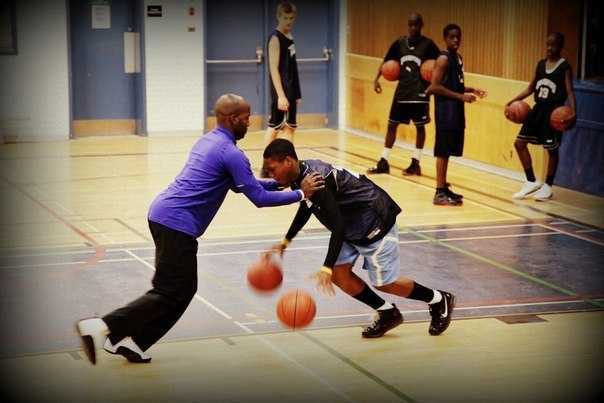
- Passer - thrower. Picking up - passing (Fig. 14).
Note: different options are possible
1) From seven positions (four meters)
2) From seven positions (from behind the three-point arc)
3) From five points with feints to shoot
4) Throw after stoppage
5) Throw and rebound (constant rotation around the circle)
Double shots: using screens
To use the screen effectively, you must read the defender correctly. You must always see the player with the ball and how the defender defends against you. A player who moves well off the ball and knows how to use screens correctly is very useful offensively. When you watch a match that has good players, notice how well they move off the ball. The hardest thing to defend against is a well-moving attacker.
Exercise 15 Back screen and snatch
- The player imitates opening and screening behind his back, makes a dash to the corner of the court.
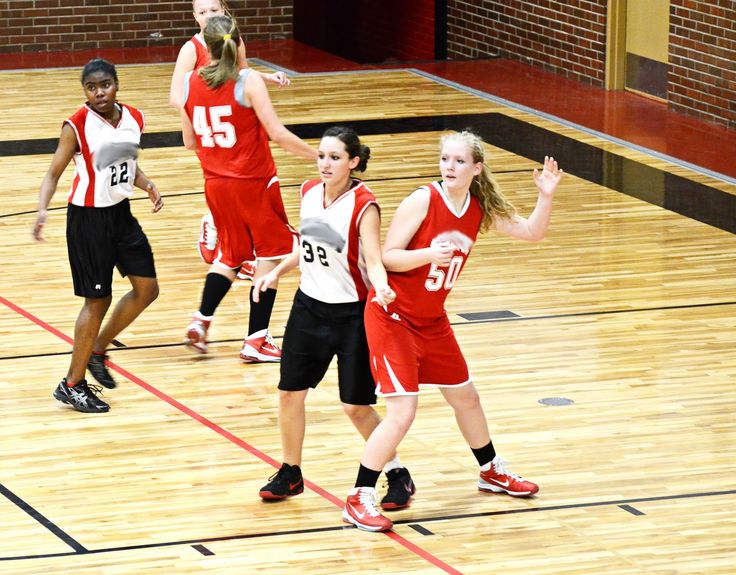
- Throw to the nearest hand.
- Attacker catches the ball and shoots.
- The attacker picks up his shot, passes to a partner and returns to his original position.
- Make seven attempts and change (Fig. 15)
Note: do not back away when dashing, turn around and run, but do not lose sight of the ball.
Exercise 16 Screening behind the back, "false" screening
- 1. Attacker starts on the base of the trapezoid and moves up to imitate the screening.
- 2. After the imaginary breakout runs, the screening attacker rises to the ball and prepares to receive the pass.
- 3. Having caught the pass, he immediately makes a throw.
- 4. Make seven attempts and change (Fig. 16).
0003
- An attacker imitates a defender aiming for a screen and rises sharply towards the ball.
- The player must be ready to receive the ball.
- The attacker catches the ball and makes a quick throw.

- Make seven attempts and change (Fig. 17)
Exercise 18 Screening the ball carrier, moving away from the ring
- The attacker screens the ball carrier.
- The ball carrier passes through the screen aggressively.
- Instead of pulling back to the basket (deuce), the screening attacker moves away from the basket and prepares to receive the pass.
- Having caught the ball, he immediately makes a throw.
- Make seven attempts, then change.
Exercise 19 Barrier at the base of the trapezoid - opening to the flank
- The attacker takes the player under the ring, breaks shoulder to shoulder through the barrier and makes a dash to the flank.
- When catching the ball, the player must turn to the ring.
- Use different throw options: just throw, and dribbling to the right or left after a throw feint. Change after five attempts (Fig. 19).
Exercise 20 Screening at the base of the trapezoid - opening into the corner of the court
- The attacker takes the player into the three-second zone, pretends that he will break through to the flank through the screen, the defender starts running around the screener through the three-second zone.

- The attacker makes a dash to the corner of the court, and the defender hits the screen.
- Further, the same as in the previous exercise (Fig. 20).
Ex. 21 Screen at the base of the trapezoid - dash inward
- The defender is chasing you, not falling behind until the very screen.
- Then you run through the screen as close to the screener as possible and break into the three-second zone or foul line area.
- Receive the ball by turning towards the hoop and throw it.
- Also work out various options for continuing after receiving the ball. After five attempts, change (Fig. 21).
Throws in pairs: pass and discount
Exercise 22 Pass and discount - starting from the center of the field flank.
The receiving player is opened for transmission. Player receives a pass and shoots. The player who made the pass picks up the ball and gives it to the thrower. Players switch roles. Everyone makes ten throws (Fig. 22).
Players switch roles. Everyone makes ten throws (Fig. 22).
Exercise 23 Pass and discount - start from the flank
Variation of exercise 22 (Fig. 23)
Exercise 24 Pass and discount - start from the corner of the site one more
exercise 2
more variation 3 .24).
Philosophy and principles of attack | Basketball
There are two types of attacks: aggressive (fast, sharp) and slow (controlled). When using an aggressive offense, the team must get the ball into the frontcourt as quickly as possible, making a reliable shot when the opportunity presents itself. Such an attack weakens the opponent's game on the shield. Using the second type of attack, the team slows down the attack or changes the pace of the game. This attack is important in cases where: a) there are few good players left in the team, b) the opposing team is superior in speed, c) when leading in the last minutes of the game, d) the enemy has taken positions in defense.![]() Organized defense is difficult to attack. Fast, reliable shots after wedging into the opponent's zone increase the team's chances of finishing, as the defense moves and cannot get into a good blocking position or a position to recover the ball on the backboard.
Organized defense is difficult to attack. Fast, reliable shots after wedging into the opponent's zone increase the team's chances of finishing, as the defense moves and cannot get into a good blocking position or a position to recover the ball on the backboard.
Teams that use a sharp attack are usually in great shape, so necessary in the last minutes of the game. The goal of such a team is to score the ball in the simplest way possible, to attack aggressively and to break the opponent's balance with pressure each time. Such an attack eliminates unnecessary possession of the ball and unnecessary movements. It develops individual and team aggressiveness, allows for frequent replacement of players, keeps them ready and disorganizes the defense. All attackers have the ability to hit the basket if they are active, so a quick attack is a pleasure for the team and spectators. Using it, you can use the tactic of leaving the lead and the moment when the opponent shoots the basket.
Coaches should also be aware of the negative aspects of this type of attack.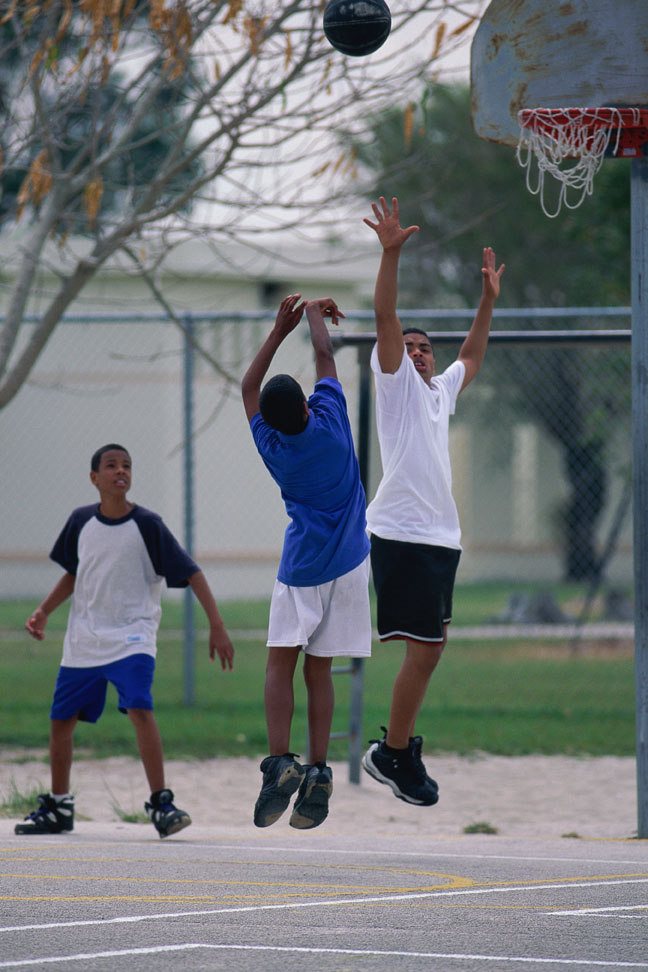 We need to teach the players to appreciate every possession of the ball. Teams that use aggressive, sharp attacks sometimes get too many personal comments and put themselves in a difficult position.
We need to teach the players to appreciate every possession of the ball. Teams that use aggressive, sharp attacks sometimes get too many personal comments and put themselves in a difficult position.
Players often waste energy for no purpose. Sometimes they start the break too early or use the break when the defense is back in position.
To achieve the best results, the team uses fast breaking and aggressive attacks in combination with positional play of the ball. If a team wants to be perfectly balanced offensively, it must be able to play both fast and slow.
Offensively, one must be able to work against personal and zone defense, pressing and combined defense, as well as play positionally, using the tactics of wasting time and freezing the ball. (The feigned combination does not necessarily mean slow movement. It involves the correct execution of game techniques to ensure the effectiveness of the combination). The team must also be armed with combinations for the last minutes of the game, for playing dropped balls and combinations for throwing the ball in from outside the area.![]()
Offensive players should aim for close range jump shots rather than going to the basket itself. First, the defense places taller players closer to the basket, allowing them to block shots from shorter players who go too deep. Secondly, the jump shot is the most effective, as players are now more productive than in the past. Thirdly, in accordance with the rules of the game, a player passing to the basket with the ball is responsible for any collision if a defender blocks his path.
Players must believe that. the coach chose the best attack system. They must subordinate the individual will to the interests of the team. It is important that their attitude to the game be expressed by the words “we won”, “we lost”.
All players move during the play of melds. At the same time, consistency is important, which is achieved by a long joint training. Another important ingredient is patience. Offensive combinations are practiced in drills that begin with learning techniques in one-on-one situations, then two-on-two, three-on-three, four-on-four, and finally five-on-five.
Every player is important in a team. Therefore, the coach must also control those who are on the sidelines, teach them to distract the enemy from the spearhead of the attack. You need to make critical remarks about the opportunities that players miss on offense, or reward them for a good shot.
Players must quickly put the ball into play on successful shots by the opponent, especially against a pressing team. They should look for flare-ups against personal pressure by using feints, backwards and screens at the sidelines; The basic philosophy of attack is reasonable aggressiveness. Aggressive attacks can cause errors, but they are compensated by opening opportunities.
It is essential for the attacking player in the center to know the position of the attackers and defenders before they receive the ball. You need to know which of the partners is breaking through to the opponent's basket and which of the defenders is moving into position to prevent a breakthrough.![]()